The approach distance for whales, dolphins and dugongs is determined by the activity you are doing, either in the air or in or on water, the type of animal and if there is a calf present.
The exception is when a whale, dolphin or dugong that is mostly white in colour is present. You must always stay at least 500 metres from them.
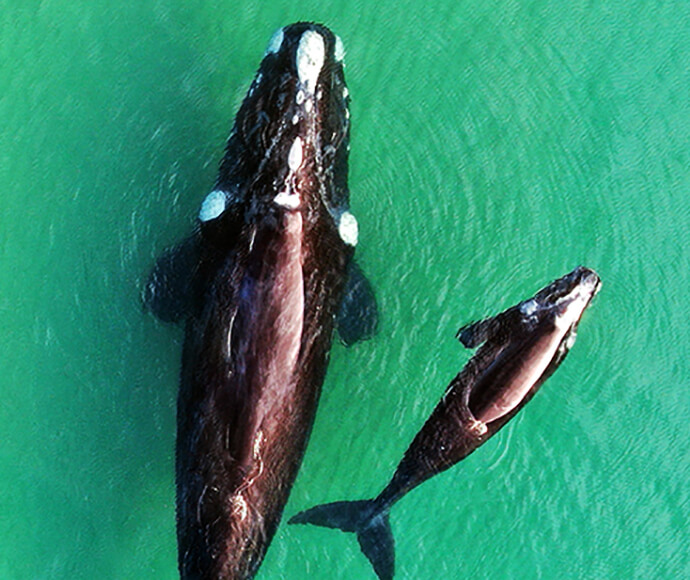
A zoomed-in drone image of a southern right whale and her newborn calf taken from the legal height of 100 metres.
Approaching when in the water – swimmers, snorkellers and divers
If you are a swimmer, snorkeller or diver, to observe a marine mammal, you may enter the water at a minimum distance of:
- 100 metres away from a whale
- 50 metres from a dolphin or dugong.
If you are in the water, you must keep at least:
- 30 metres from a whale, dolphin or dugong, including a calf.
For reference, 30 metres in length is approximately the same length as:
- an official basketball court
- 2 public transport buses lined up end to end.
Approaching on the water – boats and surfboards
A vessel is watercraft that can be used as transport, including motorised or non-motorised boats, surfboards, surf skis and kayaks.
If you are on the water in a vessel you are not permitted to approach a marine mammal from behind or wait in front of it.
If a calf is present, you are not permitted to enter the caution zone for closer viewing. The caution zone boundary is 300 metres for whales and 150 metres for dolphins and dugongs.
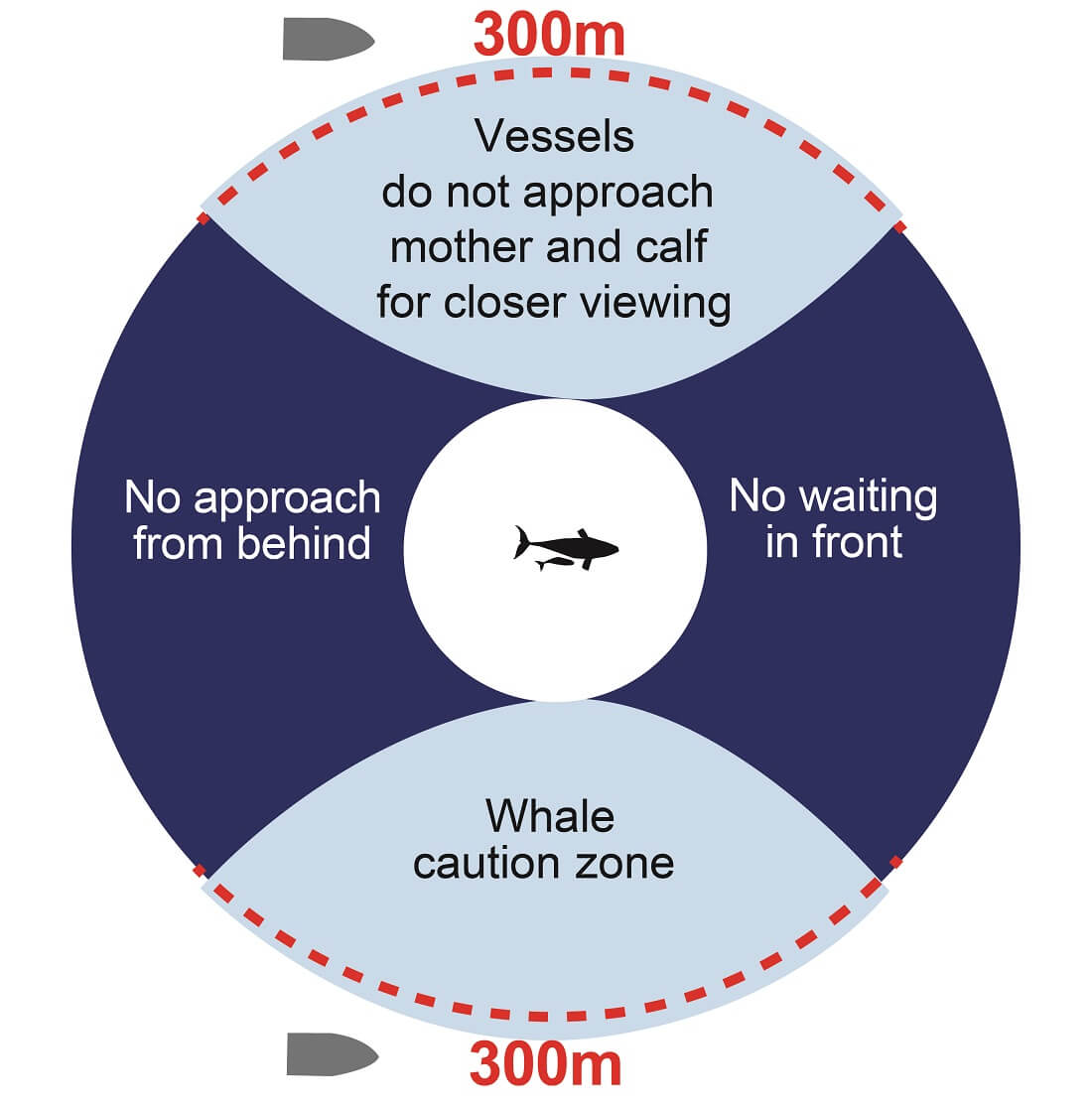
Approach distances are based on the type of animal and whether a calf is present.
You must comply with the following approach rules:
- A vessel is in the caution zone when it is:
- 300 metres from a whale
- 150 metres from a dolphin or dugong.
- A vessel can move no closer than:
- 100 metres to a whale
- 50 metres to a dolphin or dugong.
- In the caution zone the skipper must:
- post a lookout if 2 or more people are on board
- not position the vessel ahead of the animal to wait for it
- approach from the side at least 30 degrees to its direction of travel
- move at a constant slow speed with negligible wake – when the waves created by the movement of the prohibited vessel are so small that if there was a boat nearby it would not move
- remember only 3 vessels are permitted to be in the entire caution zone at any one time – other vessels must wait their turn, regardless of size and not drift closer.
- If dolphins are bow-riding, you must maintain course and speed.
- If a whale approaches, slow down to minimal wash speed, move away or disengage gears and do not make sudden movements.
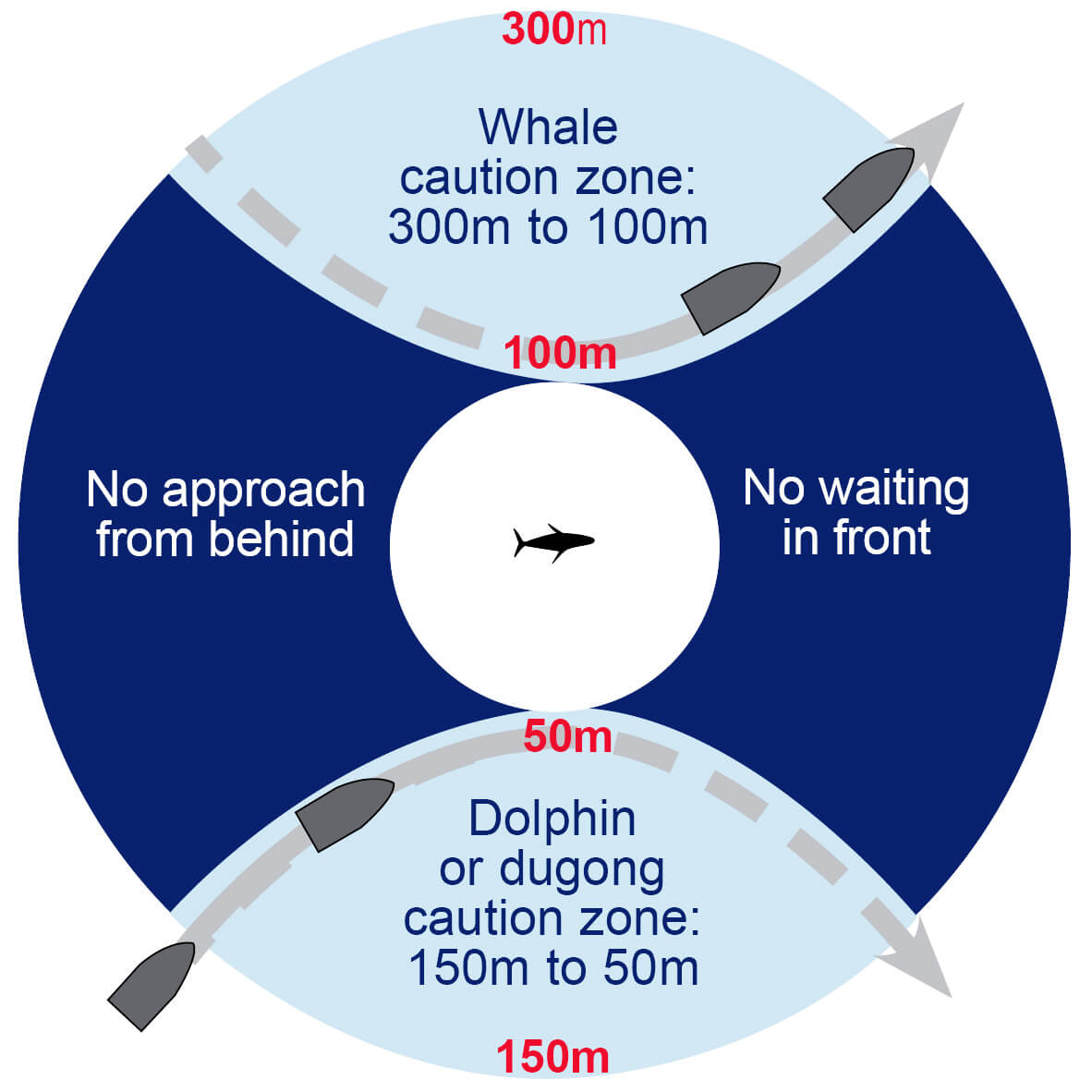
If you are on the water in a vessel you are not permitted to approach a marine mammal from behind or wait in front of it.
Approaching on the water – prohibited vessels
Prohibited vessels include personal motorised watercraft (jet skis), parasail boats, hovercraft, hydrofoils, wing-in-ground effect craft, remotely operated craft or motorised diving aids like underwater scooters.
These vessels are prohibited because they can make fast and erratic movements and not much noise underwater, so there is more chance they may collide with a marine mammal.
If you are approaching a marine mammal using a jet ski or other prohibited vessel you must have negligible wake and stay at least 300 metres from a whale, dolphin or dugong.
Approaching from the air – aircraft including drones
To observe a marine mammal from the air, you must approach it from behind, not hover over it and not land on the water to observe it. The pilot must also comply with Civil Aviation Safety Authority (CASA) requirements.
The approach distances for different types of aircraft are:
- 100 metres for drones (also known as RPAs and UAVs)
- 300 metres for fixed-wing aircraft
- 500 metres for helicopters and gyrocopters.
The approach distance for aircraft is the height above a marine mammal and the horizontal distance away from it.
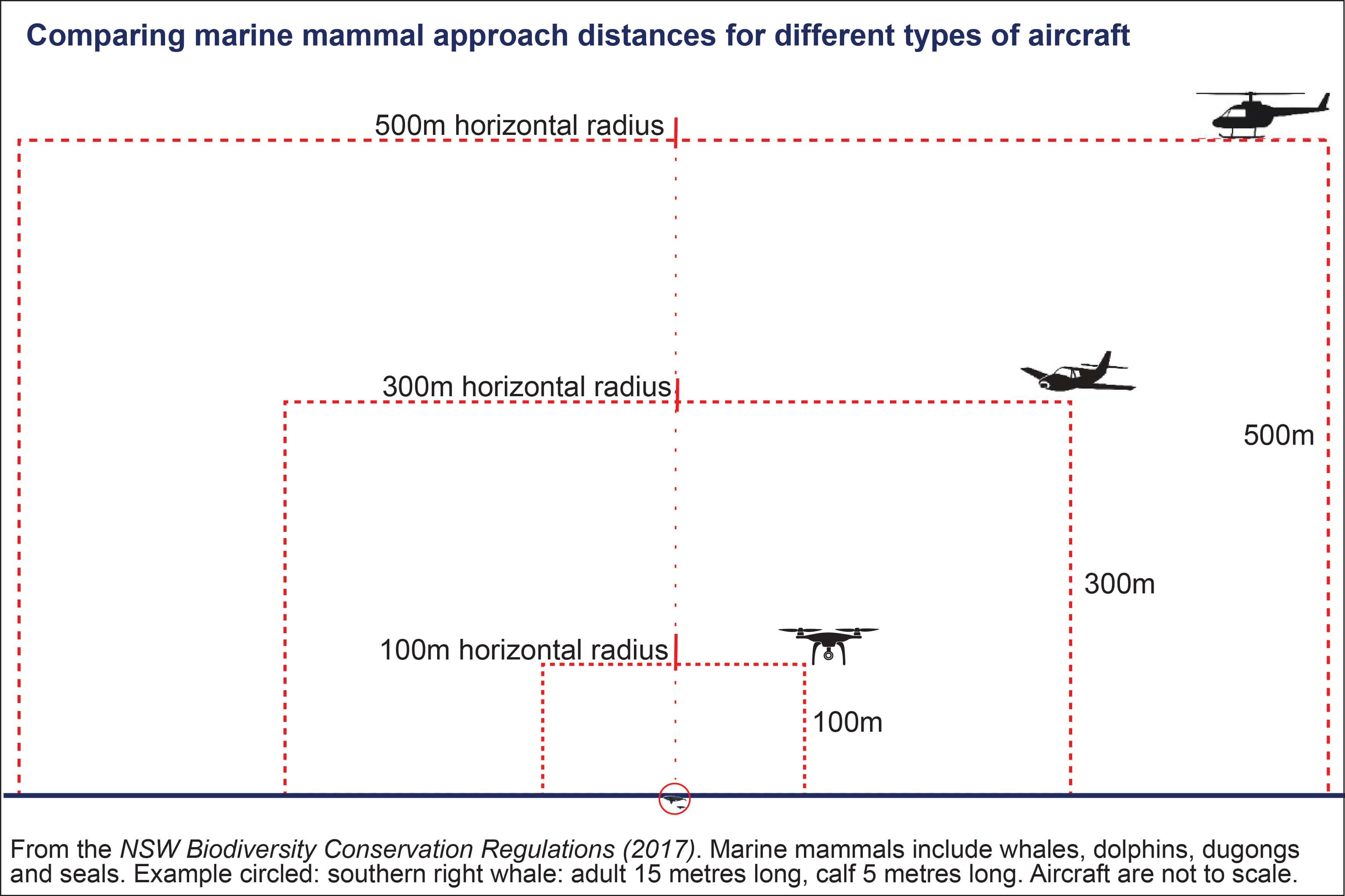
A drone pilot needs skill, understanding of the regulations and environmental awareness to lawfully approach a marine mammal.
If you go closer than the approach distance, you have entered the no-fly zone. The no-fly zone for aircraft over a marine mammal can be imagined as an approach distance cylinder.
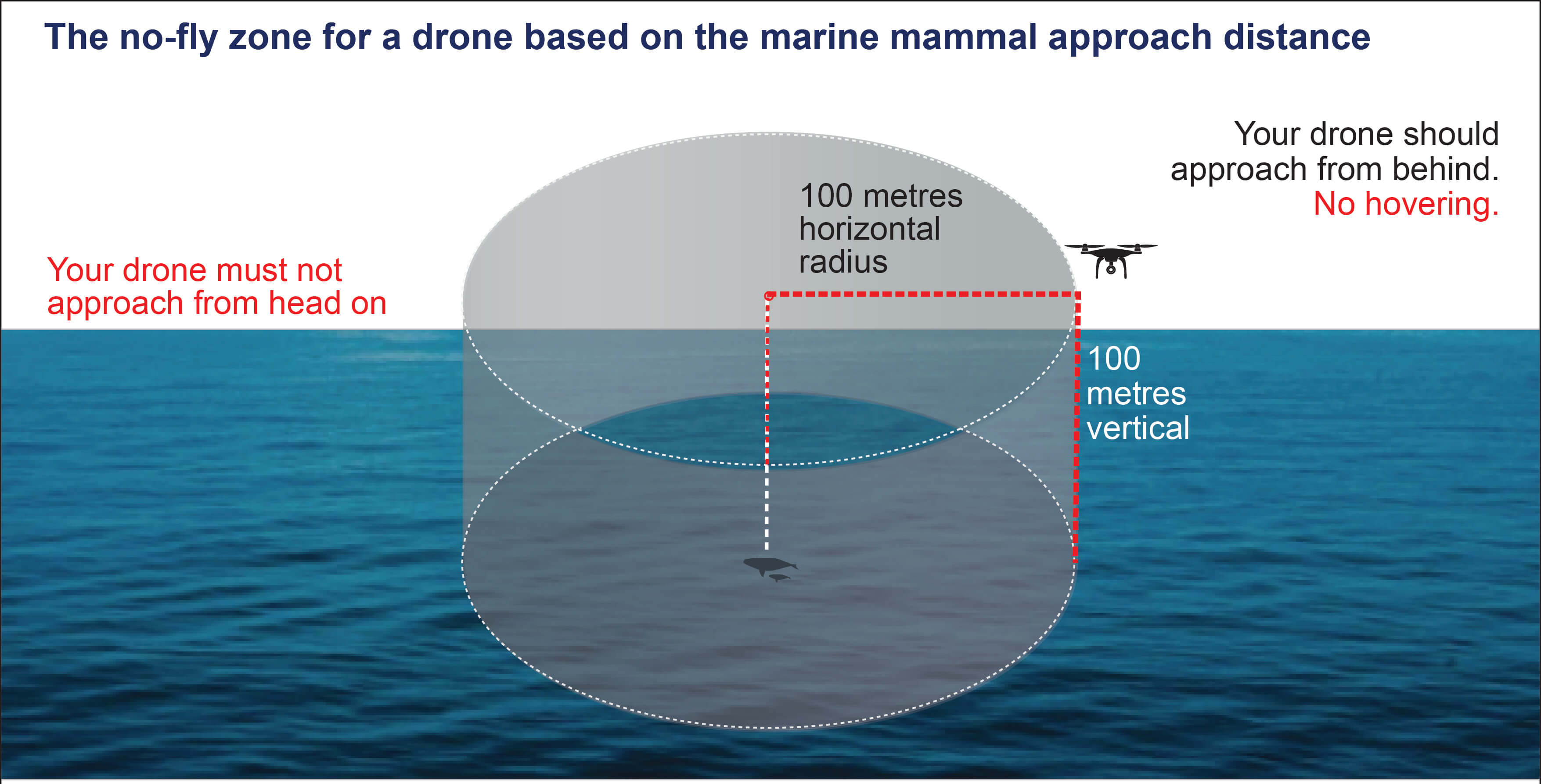
The no-fly zone for aircraft over a marine mammal can be imagined as an approach distance cylinder.
The 'no-fly zone' is shaped like a cylinder and moves with the whale, dolphin, dugong or seal. A drone can fly a minimum of 100 metres vertically over, and 100 metres horizontally around a marine mammal. A drone is not permitted to cut through the no-fly space. The aircraft is not to scale. This is based on NSW Biodiversity Conservation Regulation (2017).
A drone pilot needs skill, understanding of the regulations and environmental awareness to lawfully approach a marine mammal. The drone pilot must always be in visual line of sight with the drone, not create any hazards and not cause harm to wildlife.
Listen for wildlife distress calls. If birds are disturbed, the pilot is advised to abandon the flight for 5 minutes, land and consider an alternate launch site or wait until birds of prey have left the area, or nesting birds have resettled, then try again.
Seek permission to launch from the landholder or land manager and follow all instructions. Do not launch from or fly over a national park without permission.